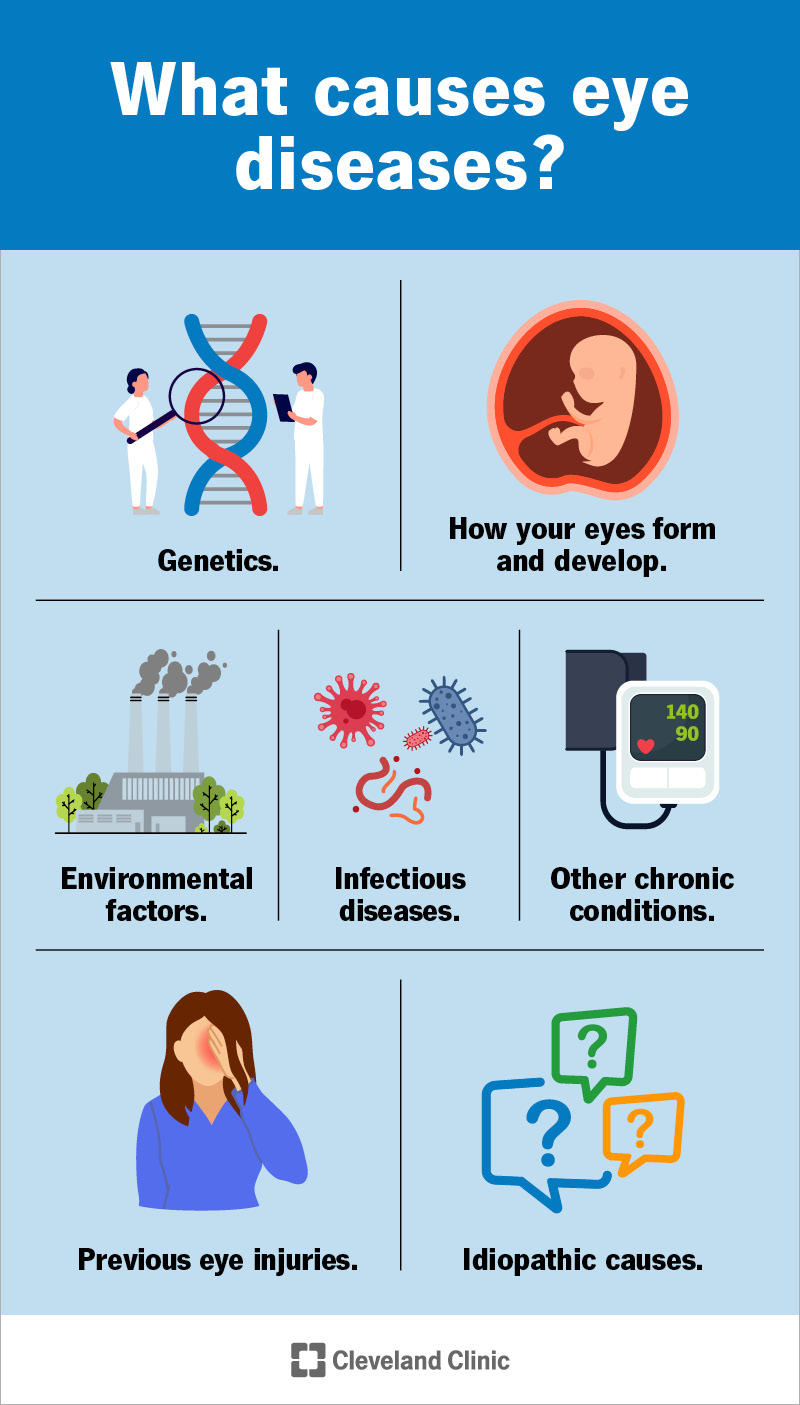|
Overview What are eye diseases? Eye diseases are conditions that affect any part of your eye, and include conditions that affect the structures immediately around your eyes. These conditions can be acute (meaning they develop quickly) or chronic (meaning they develop more slowly and last a long time). Advertisement Cleveland Clinic is a non-profit academic medical center. Advertising on our site helps support our mission. We do not endorse non-Cleveland Clinic products or services. Policy Your eyeball itself is where most eye diseases happen, but it isn’t the only place. Eye diseases also include conditions that can affect your eye muscles, eye socket, eyelids, or the skin and muscles immediately around your eyes. How common are eye diseases?In general, eye diseases and vision disorders are extremely common. The World Health Organization estimates that over 2.2 billion people have some form of vision impairment or blindness. One reason that eye diseases are so common is that your eyes don’t exist in isolation from the rest of your body. In fact, the opposite is true. Many conditions that affect your eyes happen because of or in connection with conditions affecting other body systems. That’s why there are hundreds of different conditions that can affect your eyes. What are the most common eye diseases?The most common eye diseases worldwide are: Eye injuries are also a leading cause of vision loss and blindness. Experts track and research them like diseases to find better ways to prevent and treat eye injuries. Advertisement Eye cancers and tumors, while rare, do sometimes happen, but often they’re detectable with regular eye exams. Fortunately, many eye tumors are benign (noncancerous). These benign growths may still need removal to prevent them from affecting nearby tissues, but aren’t a greater threat. What are the different types of eye diseases?There are many types of eye diseases, but there are a few main ways to organize them: Structure. What specific do they affect? Underlying cause. Primary eye diseases start in your eye. Secondary eye diseases happen because of a condition elsewhere in your body that later affects your eye. Effect. What symptoms do they cause, or what functions do they affect or disrupt? Duration. Acute eye diseases, like eye infections, are very short-lived. But chronic eye conditions can last months, years or even your entire lifetime. When talking about eye diseases, it’s also important to know the difference between sight and vision. Sight: This starts when light enters through the cornea and ends when light lands on the retina. Vision: This covers every step that’s part of your visual sense, including sight. It also includes how your nervous system handles and processes visual signals and turns them into what you see. While many people — experts included — frequently use “vision” and “sight” interchangeably, they aren’t always the same thing. Sight-related diseases are specific to your eyes, while vision-related diseases can involve your brain and optic nerves, too. That’s why some diseases can cause vision loss even though your eyes work just fine. (责任编辑:) |

